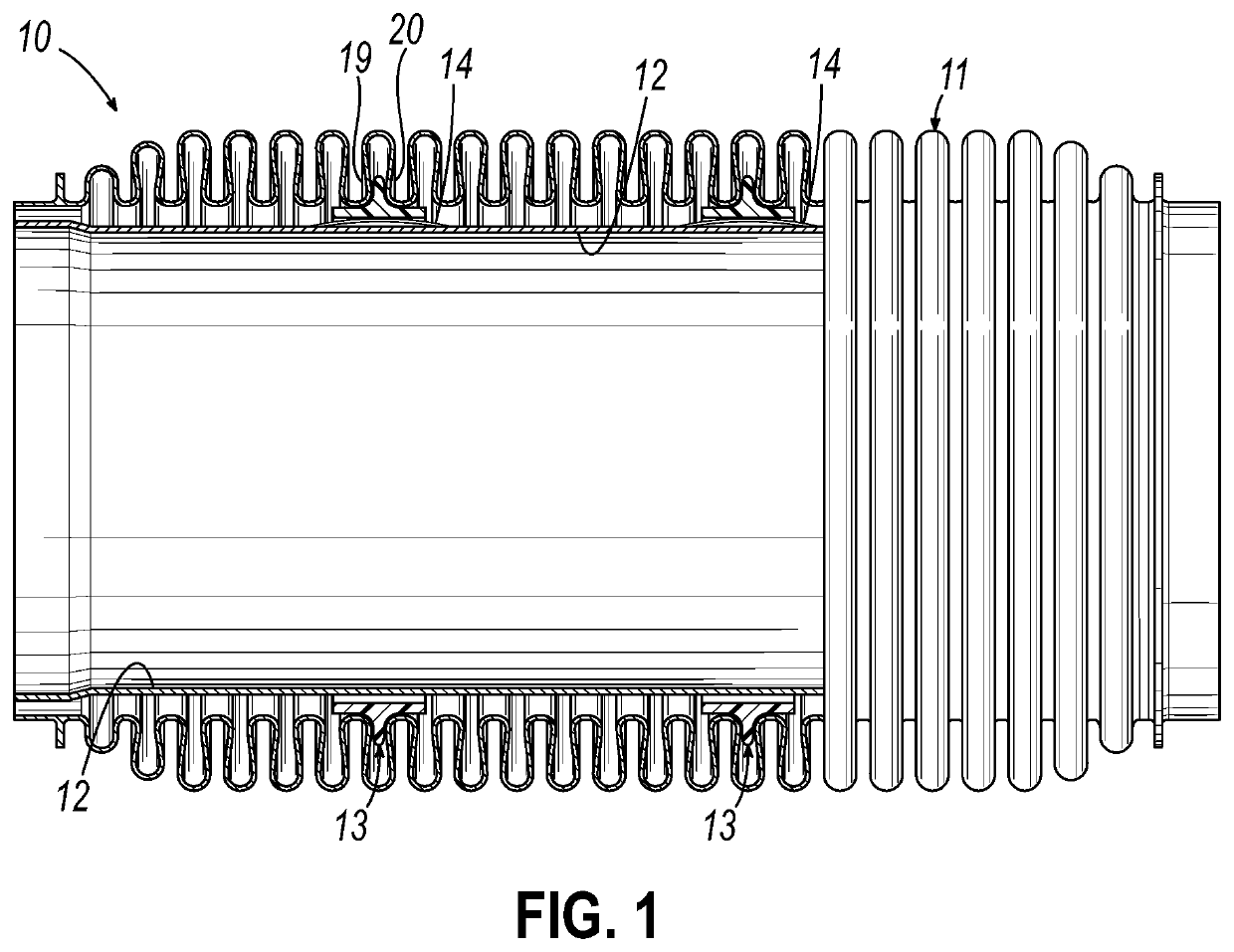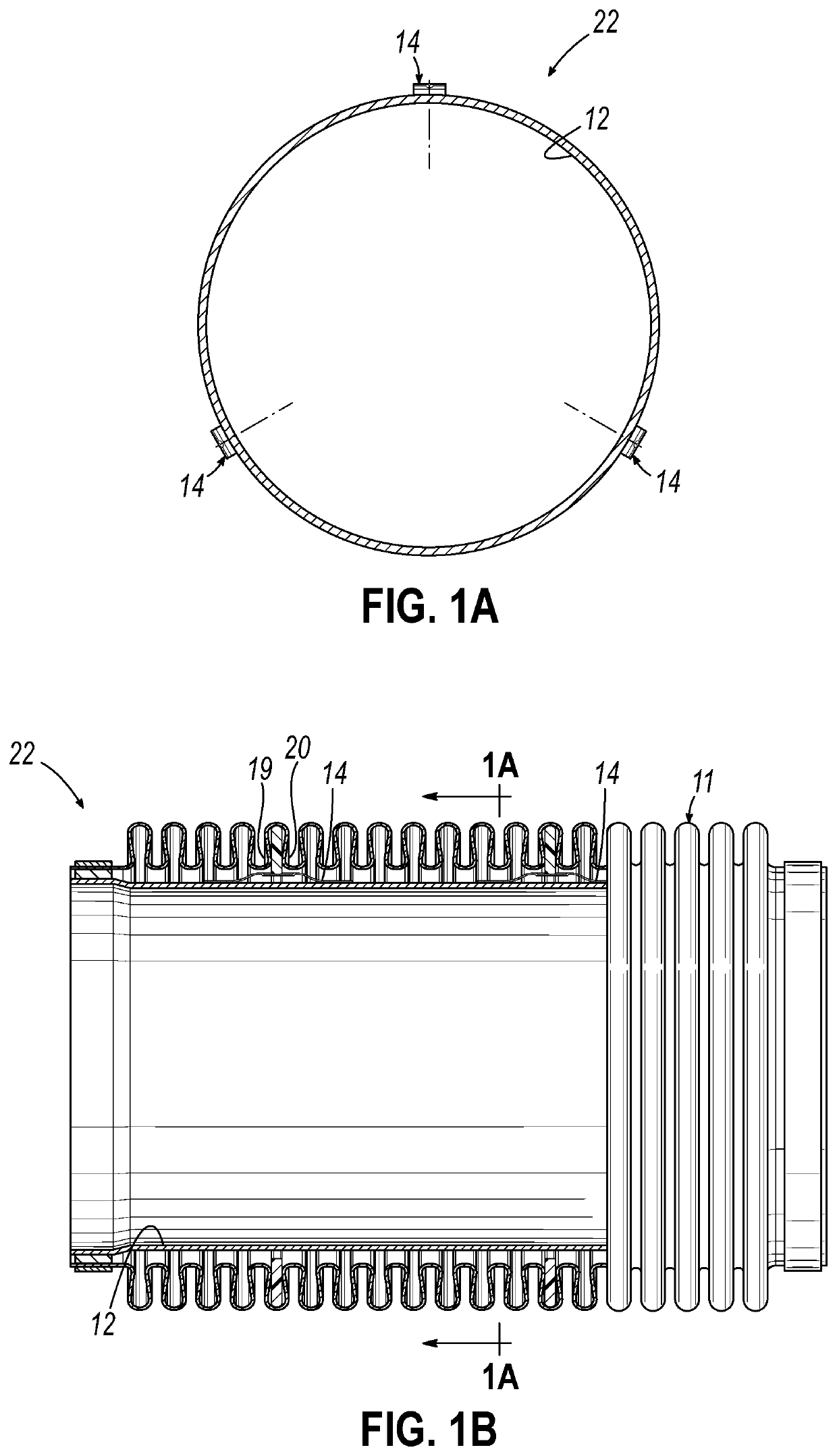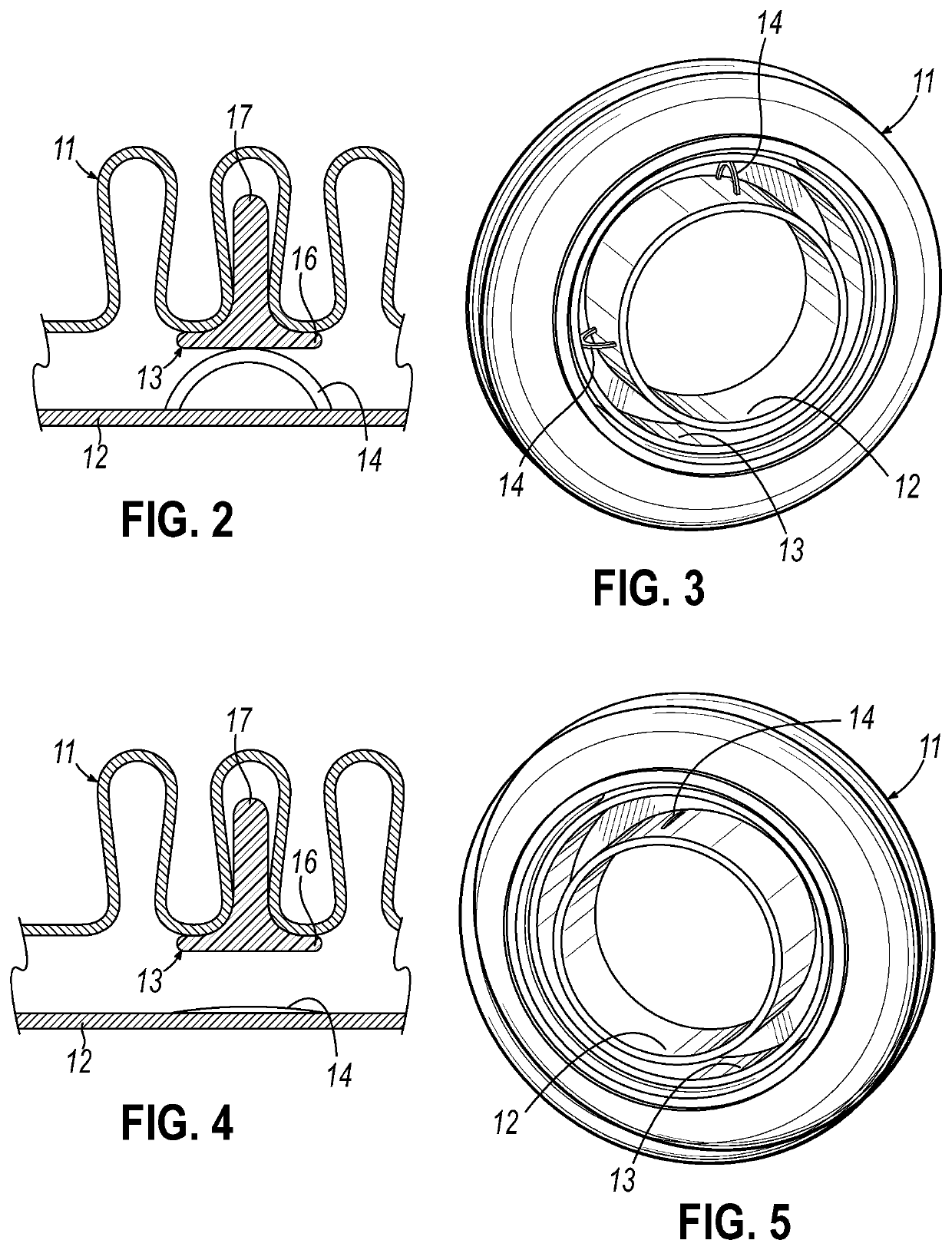Self-restraining abrasion prevention exhaust conduit
a technology of exhaust conduits and self-restraining abrasion, which is applied in the direction of hoses, mechanical devices, adjustable joints, etc., can solve the problems of external corrugated bellows, severe abrasion between damping elements, and failure of components
- Summary
- Abstract
- Description
- Claims
- Application Information
AI Technical Summary
Benefits of technology
Problems solved by technology
Method used
Image
Examples
Embodiment Construction
[0067]Turning now to the drawings, it will be appreciated that many variations and embodiments of the components described are within the contemplation of the invention. For example, the drawings described above are illustrative of a variety of component structures and numbers thereof. Thus, it will be appreciated that variations and embodiments are described without limitation to other elements and features as will be appreciated. Without limitation, configuration of the damper cushions, elastic spacers, liners, bellows, over mesh or braids or other features may vary. Also, components of the invention with similarities to others in alternate embodiments bear the same identifying numbers.
[0068]A preferred multiple component conduit 10 in FIG. 1 includes a flexible bellows member 11, a damper 13, an expandable interlock liner 12 and a plurality of metallic, elastic spacers 14 secured at ends to liner 12. Liner 12 may be of any suitable configuration, such as a metallic interlock stru...
PUM
 Login to View More
Login to View More Abstract
Description
Claims
Application Information
 Login to View More
Login to View More - R&D
- Intellectual Property
- Life Sciences
- Materials
- Tech Scout
- Unparalleled Data Quality
- Higher Quality Content
- 60% Fewer Hallucinations
Browse by: Latest US Patents, China's latest patents, Technical Efficacy Thesaurus, Application Domain, Technology Topic, Popular Technical Reports.
© 2025 PatSnap. All rights reserved.Legal|Privacy policy|Modern Slavery Act Transparency Statement|Sitemap|About US| Contact US: help@patsnap.com



